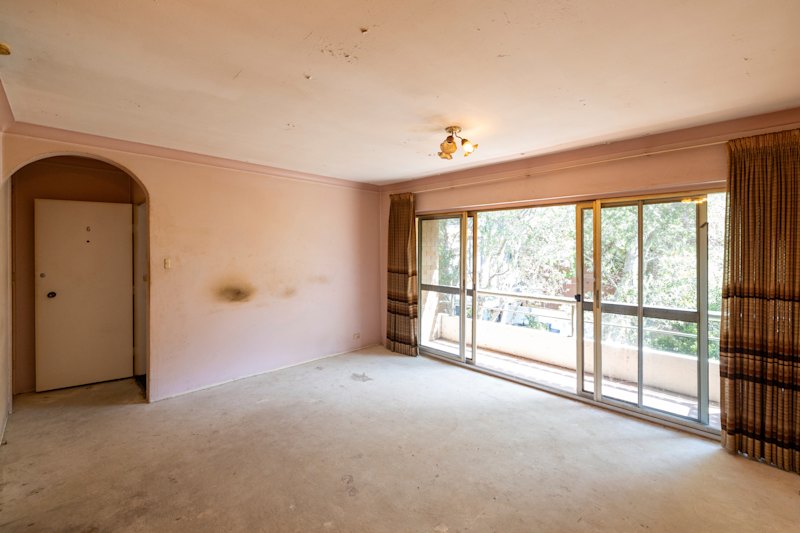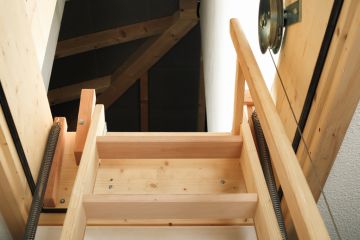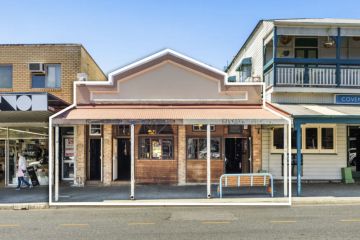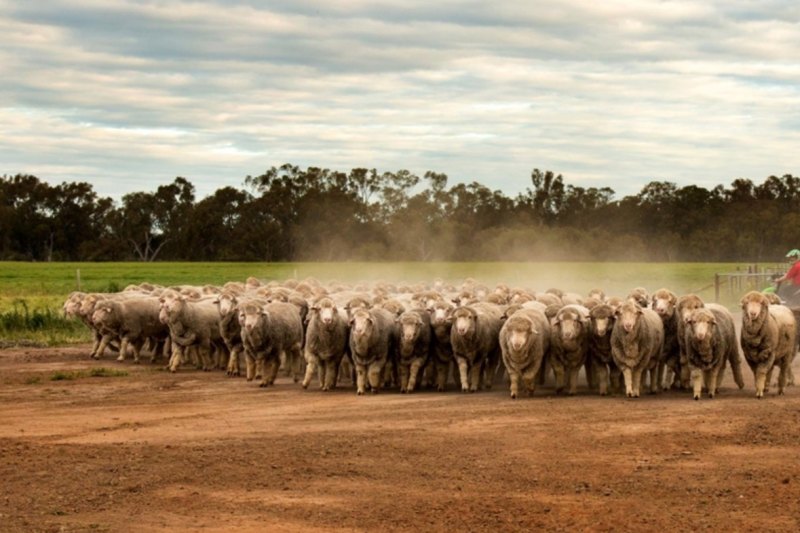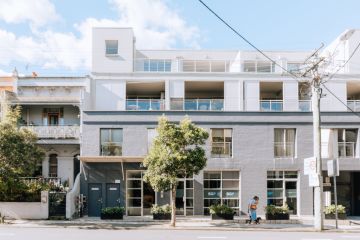Tiny housing inquiries ramp up during coronavirus lockdown
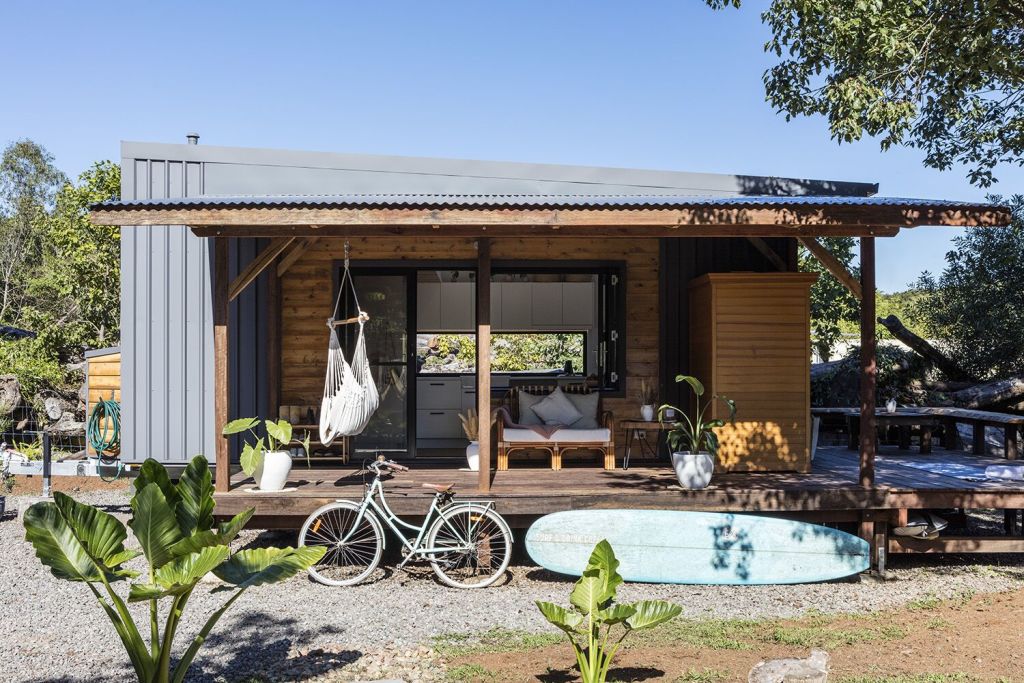
Tiny houses have been a niche thing for a decade, popular with adapters motivated by environmental issues, or locked out of conventional residential by cost barriers. In essence, they’ve been a route to home ownership, albeit at a spatial squeeze.
But expressly because they offer detached occupation, they can be customised to your specifications within a matter of months, and they come in at a fraction of the cost of house prices – between $31,000 and $150,000 – in the time COVID-19 isolation, tiny houses are coming into their own for a new set of reasons.
With so many suddenly unemployed adult children back in their old bedrooms; with commuter parents and partners suddenly finding they’re both working from home; with researchers and creatives needing to separate their practice from kid toy trip-hazards, the tiny typology is suddenly offering a lot of useful solutions.
Fabio Paulucci, managing director of Queensland’s Aussie Tiny Houses which has a wide and developed portfolio of 20 different wheeled units, says for the first 10 days of the nation’s stay-home lockdown, “nothing happened”. The phone went dead.
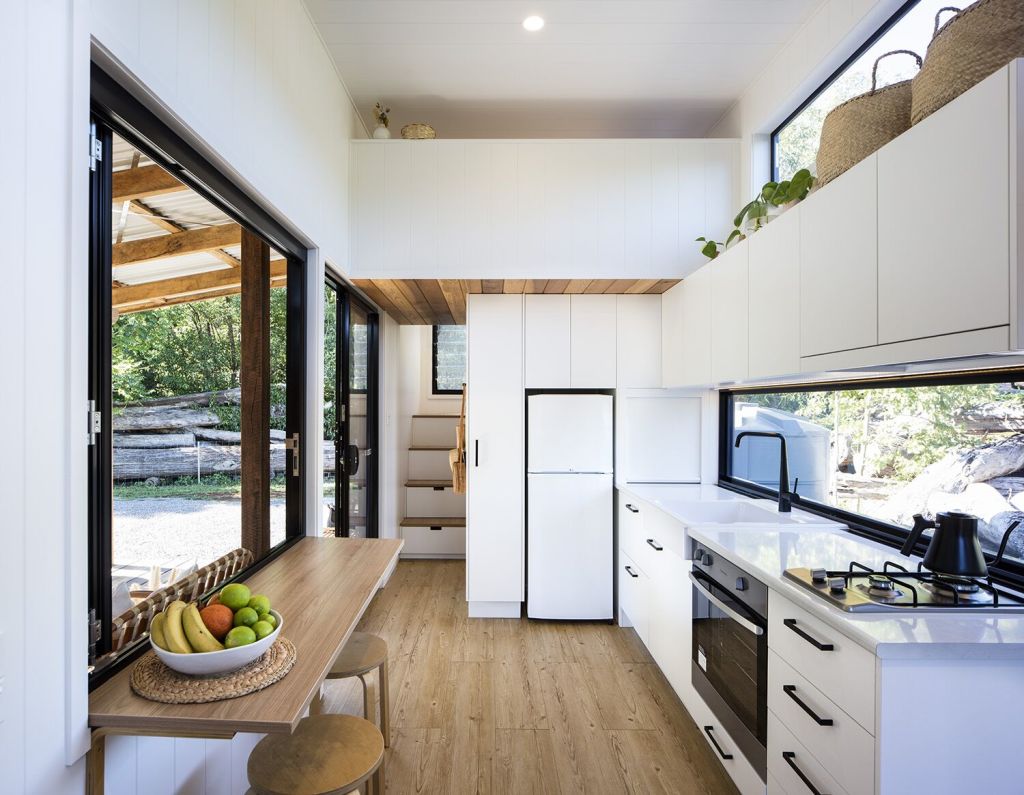
Then came “a massive influx of emails and calls from people asking very directly when they could get a tiny home? Some wanted more than one. Some wanted three or four units.”
Parents are asking on behalf of their children, he says. “They’re also asking for elderly parents.” “We’re getting all sorts of demographics, which isn’t unusual, but what we’re noticing is the urgency, which is [unusual]. We’re being asked, ‘when is your next available delivery?’”
One young woman, who found out it might be three to four months until she could get an Aussie Tiny House delivered to her parents’ address, received the news philosophically, sighing that she could perhaps endure cohabitation under their roof for that time … but not for much longer.
“We’ve got so many people coming after us, that we’ve doubled our production and we’re hiring staff. It seems that we’re in the right industry at the right time,” Paulucci says.
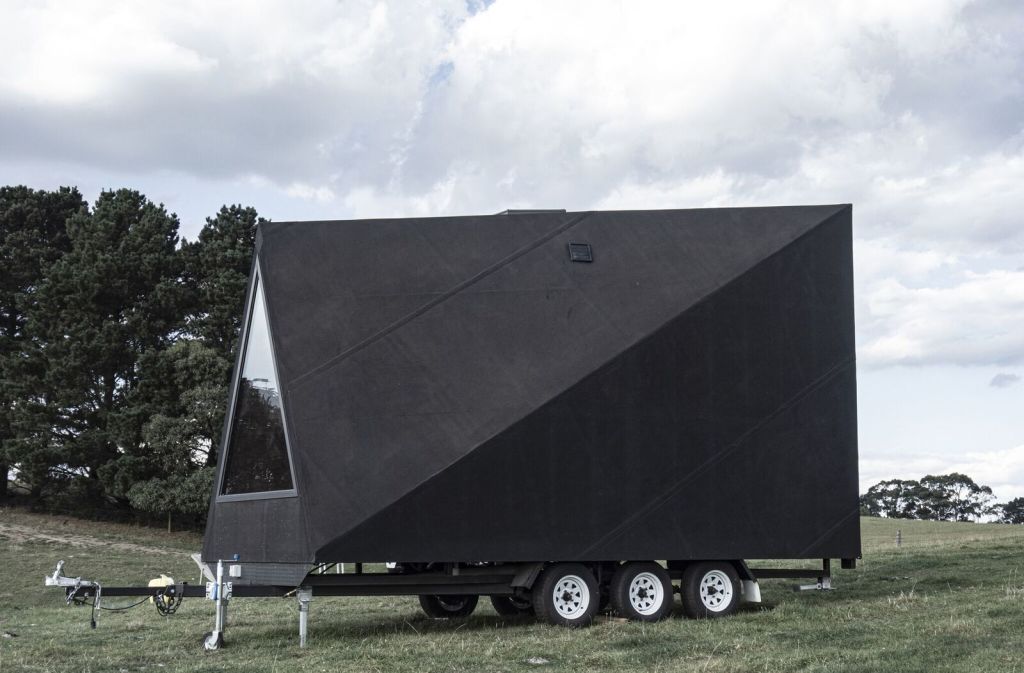
There are scores of tiny house builders in all states and there are a number of specialist realtors who rent out or resell pre-loved units.
There are also architects who design tiny houses as a side hustle.
And with all this activity the tiny industry has come up with an amazing diversity of styles and fit-outs, all aimed at making small space lifestyles as practical, functional and stylish as possible.
Asked by Base Cabin Building Company, a new outfit entering the tiny home scene, to come up with a protype dwelling on wheels, Melbourne architect Ben Edwards gave his usual twist to the brief for “considered, functional, flexible space that provided a fresh approach to the micro home”.
Already a bit of a small space specialist given he has a background that associates him “with the space efficiencies of boat design”, Edwards designed a very unconventional volume that he thinks of “as a cross between an A-frame house and an iconic Airstream trailer” onto the conventional small house template of 2.5 metres x 8 metres.
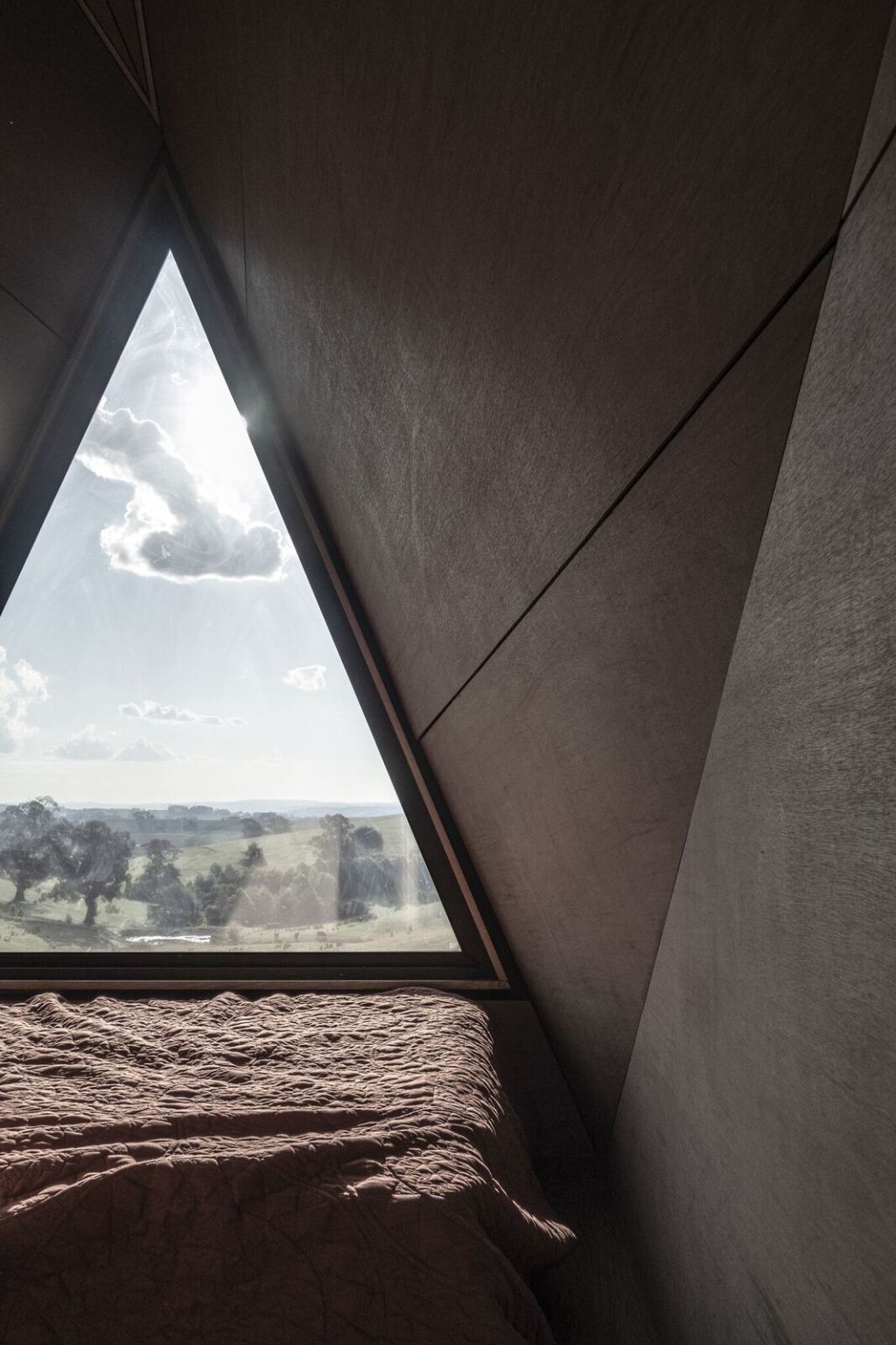
The A-frame end, with a big triangular window, is the bed end. Morphing through the central up-sloping volume that allows for kitchenette, fold-out table and bathroom with toilet, the volume transforms into a rectangle that has an unusual 3.3-metre above-head height.
“That’s higher than a normal room” says the director of Studio Edwards. “That height makes the space feel completely different”.
When the double-glazed, fold-away doors are open at the tall end, “the space of 15 square metres actually feels quite big”.
Lining the unit with ply that overlays insulation, and specifying double-glazed aluminium windows and doors as a thermal necessity, Edwards was after a lightweight construction which is where the A-frame portion is a win “because it uses less material”, and where a novel application of a black rubber membrane is so clever.
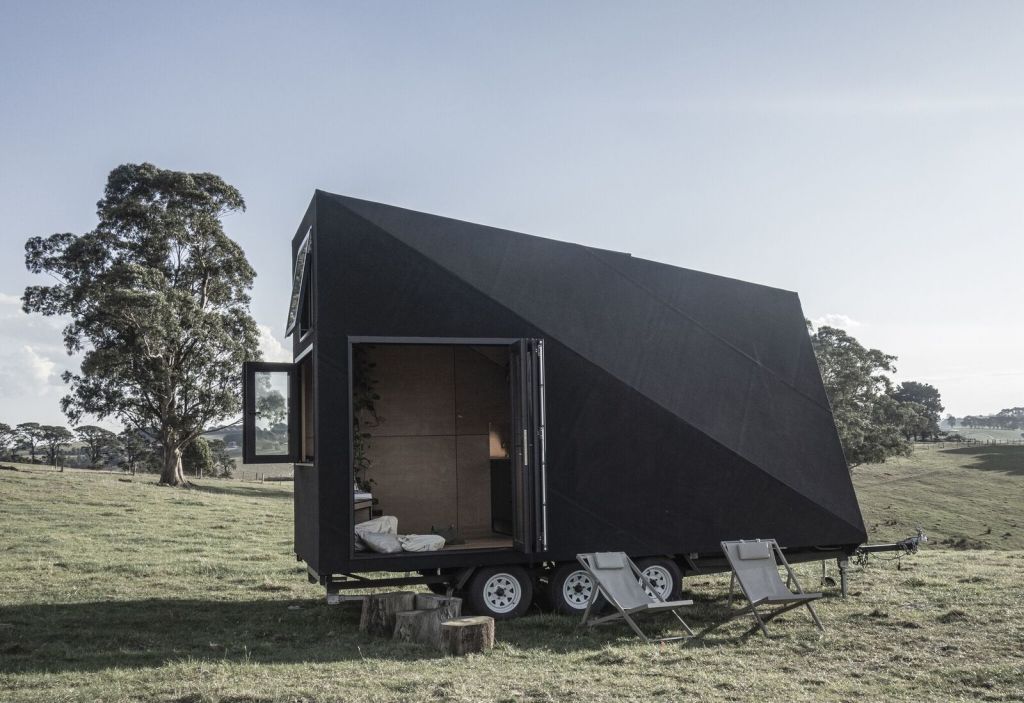
“The Butynol rubber is like a wetsuit and I chose it because it was lightweight and made the [Base Cabin] volume look more dynamic. It is like a skin on those angles and creates a seamless, robust external envelope that is also visually recessive.”
Edwards had fun with the project “of making clever small spaces work hard. Even if a place is small, it can be adventurous and exciting and have grand ambitions.”
Fully fitted this version of the Base Cabin can be made for $99,000 plus GST.
We recommend
States
Capital Cities
Capital Cities - Rentals
Popular Areas
Allhomes
More
- © 2025, CoStar Group Inc.
